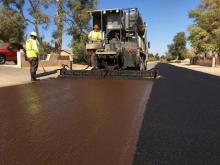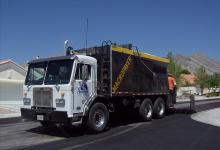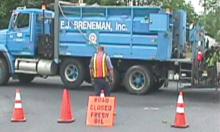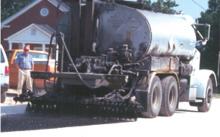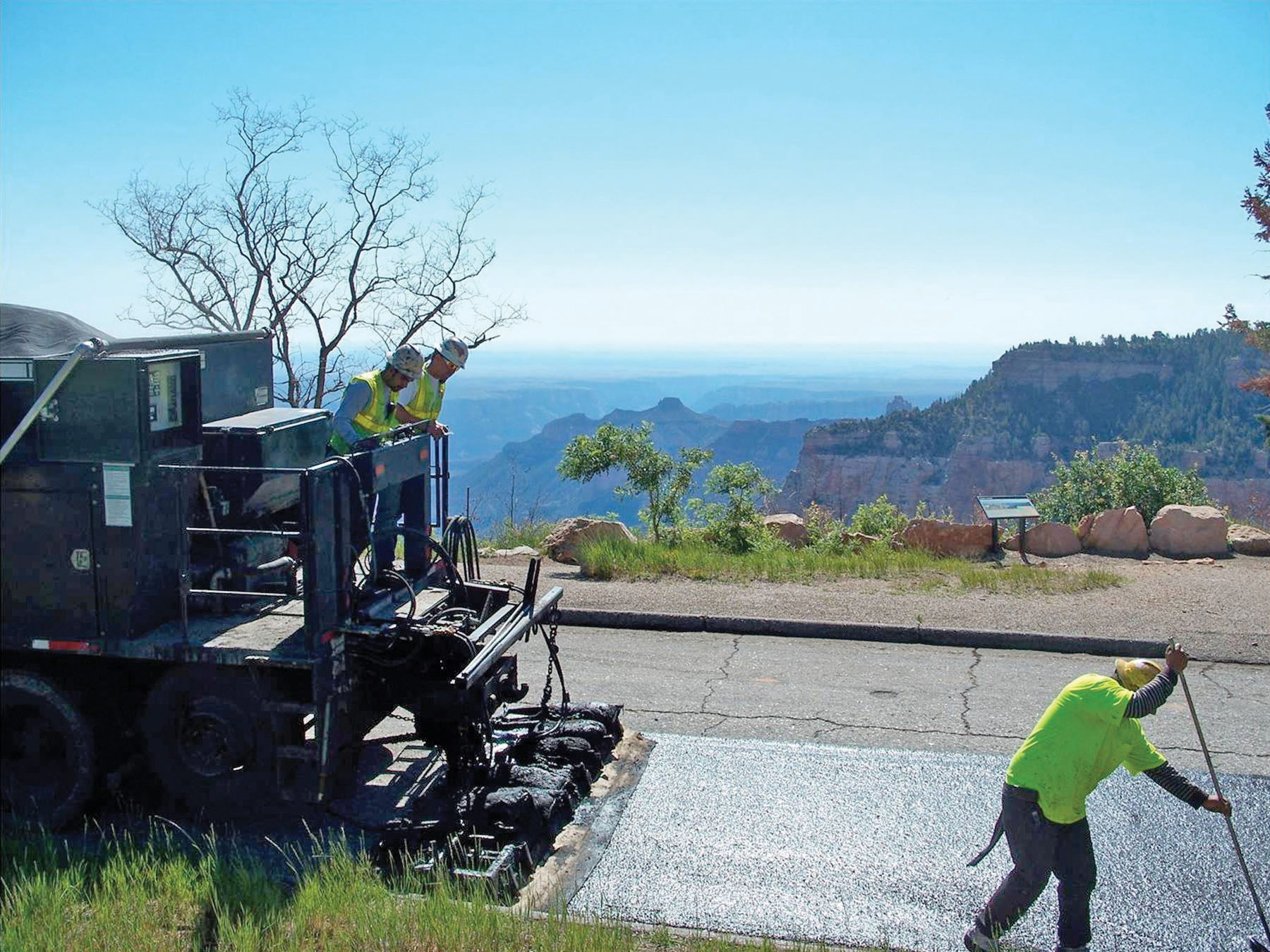
A versatile solution has helped with a tricky project at the Grand Canyon in the US – Pierre Peltier
When Intermountain Slurry Seal, a division ofThe remote roads leading from Jacob’s Lake, Arizona, to the North Rim Lodge had deteriorated to a point that the Federal Highway Association’s (FHWA) Central Federal Lands (CFL) Highway Division opted to use ARRA (American Recovery and Reinvestment Act) funds to repair them. No one knew exactly how long it had been since the roads and parking areas had received any real maintenance, but it was estimated that no major work had been done for at least 15 years, and up to 25 years in some places. The area was up to 160km away from aggregate sources and lodging for contractors. The high altitude also left a short season to complete the job.
The original Grand Canyon National Park Pavement Preservation-North Rim project outline called for chip sealing on all of the main roadways, micro surfacing for smaller roads and parking lots and some Type 1 and Type 2 flexible patching. Much of the asphalt surface within the park was originally multi-lift chip seal. And with the exception of Route 14 (the main park entrance road) and some patched areas on other routes, chip seal was still the functioning surface.
Intermountain Slurry Seal was scheduled to begin work so it could be completed before the height of the tourist season. What the contractor was unaware of was that between bidding and the start of the project, the parameters for the job had drastically changed.
In addition, a heavy-snow year at the North Rim pushed the start date back by almost a month. When the contractor finally arrived on site, it realised the project owner had added six times the patching quantities over the original bid amounts. In addition to the roads being in worse shape overall than anyone anticipated, a forest fire occurred after the bidding closed and further damaged roads to a point that more work was needed over and above the original bid parameters.
This meant that the project would continue into the busiest weeks of the season, while it would also be a challenge to complete before the weather started to cool off.
Once it was on-site, but before it started the North Rim patching work, Intermountain Slurry Seal recognised that Type 1 and Type 2 patching were in excess of what was needed in many areas to repair the surfaces. So because of the projected overrun of patching, the firm proposed to do Type 3 patching which would require removal and replacement of only 76mm. The Park Service agreed, and patching commenced from June through the end of July. The additional patching added 20 days to the firm’s schedule, which was already behind because of the snow.
With the completion of the patching at the end of July, the micro surfacing had to be finished by the end of August, with chip sealing to follow. Had Intermountain Slurry Seal applied the micro surfacing and chip sealing concurrently, it could have carried out all the work easily but this would have impacted on tourist access to the park during its busiest month.
Micro surfacing was planned for a total of 43 parking- and camping-related surfaces. Scheduling was critical, and Intermountain Slurry Seal posted pre-notification for each area seven days in advance. On average, it took three days to clear a parking lot, creatively on occasion.
Adding to the difficulties was the fact that because of trees and obstacles, many camping areas, including 87 campground stalls, could not accommodate equipment. In many of the parking areas, the rock curbing is considered to be a National Historic Landmark. To avoid asphalt emulsion splash or damage in these locations, Intermountain Slurry Seal handled almost 25% of the total micro surfacing for the project by hand.
Chip sealing began at the end of August, which also ushered in monsoon season for the park. By this time, morning temperatures were too cool for the chip sealing process.
Because of the extra patching needed, the contractor reduced the quantity of chip sealing to offset the cost. Like the other processes preceding it, the chip sealing required modification to the original plans, as well as ongoing good communication with the Park Service. And although the Park Service preferred not to close roads, management realised it was the only way to keep the public and Intermountain Slurry Seal’s employees safe.
The road closures added pressure to keep the schedule, which had to be published a month in advance of the work and only allowed three days to complete each closed road. In addition, the narrow roads required a modified method for chip sealing application.
All of the trucks ran in a group from the site to the stockyard in order to cover the full width of the road in one pass. This was because there was no way to allow the trucks to pass around the chipper without moving it off the road, which would have been impossible due to the mountainous terrain and environmental requirements stipulated by the Park Service.
The fact that this project was a FHWA CFL project in conjunction with the National Park Service, funded by ARRA, coupled with its remote, mountainous and historic location, created some additional challenges. Crew lodging was not available near the park, so Intermountain Slurry Seal crews had up to three hours of travel time to the job site each day. Radio and cell phone communications in the park were limited due to the terrain, putting added emphasis on planning.
Emulsion was shipped from Tucson, Arizona, and required the crew to place orders two days in advance. The terrain also contributed to the biggest project risks: limited-sight distance, sharp curves, narrow roadways and steep drop offs directly adjacent to the roadway.
Material for chip sealing on federal projects is subject to quality acceptance testing. This equated to 20 samples that were collected, split and processed daily during the chip sealing process.
There was limited availability of adequate or approved staging areas and multiple forest fires caused the crew to consistently relocate its micro surfacing stockyard and equipment, which then required retesting of material.
But the care taken to meet every challenge paid off. When the project was complete, a federal ARRA audit rated the job at an A-. Its Grand Canyon work also led Intermountain Slurry Seal to receive the 2011 President’s Award from the International Slurry Surfacing Association (
Safety with skid resistance
High friction surfaces have been used throughout the UK since the 1960s and play a major role in improving road safety, but have been criticised for high cost and perceived poor durability. But the UK’s Road Surface Treatments Association (
High friction surfacing is a proven road surface treatment that increases skid resistance and reduces braking distance. Typical locations for high friction surfacing include road junctions, approaches to traffic lights, pedestrian crossings and roundabouts as well as road stretches that have high accident levels.
Treatment with high friction surfacing makes potentially high risk road locations far safer for both drivers and pedestrians and the financial savings of achieving this are considerable. With the associated accident and investigation costs of non-motorway fatal accidents calculated to be £1.4million, the application of high friction surfacing offers considerable value.
But concerns over surface life and increasing costs have reduced the use of this technology. As a result, the RSTA, with support from the Association of Directors of Economy, Environment, Planning and Transport (ADEPT), has now put in place new industry guidance to address concerns over durability. Two key documents have been published recently|: a new Code of Practice and a new Service Life document. Both of these documents have been developed with endorsement from ADEPT.
The Service Life of Surface Treatments establishes the service life of a range of road surface treatments including high friction surfacing and provides an agreed baseline for durability, which is crucial for lifecycle planning and asset management. The service life is dependent upon a number of important factors including site location and traffic volumes, surface preparation, method of working and workforce competence.
The Code of Practice provides best practice guidance for ensuring that the baseline service life is achieved. Aimed at both client and contractor, the code examines the application of both hot and cold high friction surfacing systems and provides practical guidance and technical details for specifications and installation. Training is also crucial and courses have been established specific to high friction surfacing.

